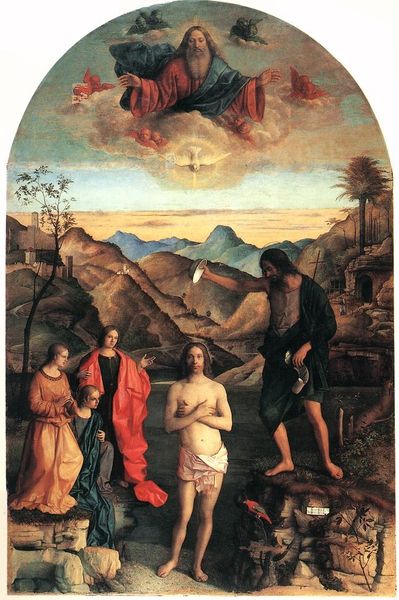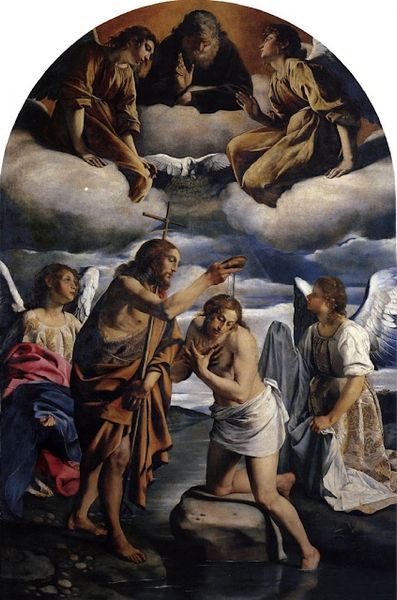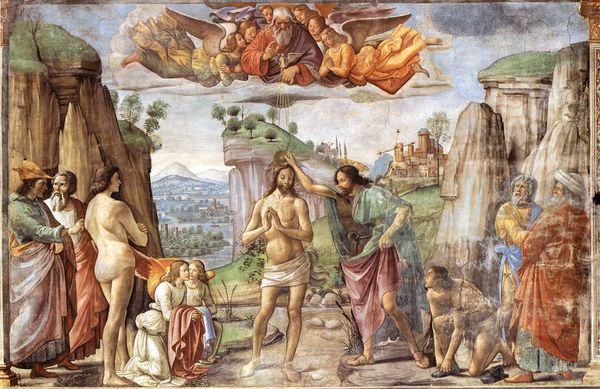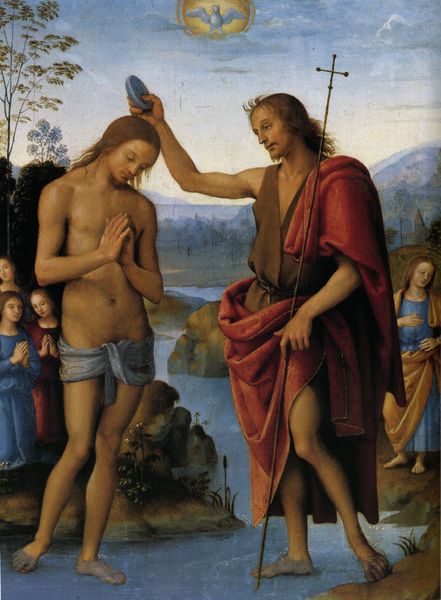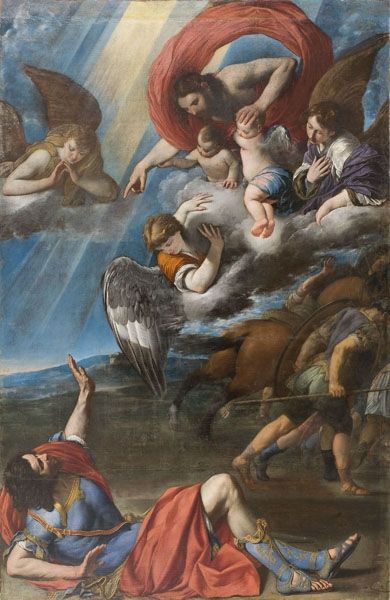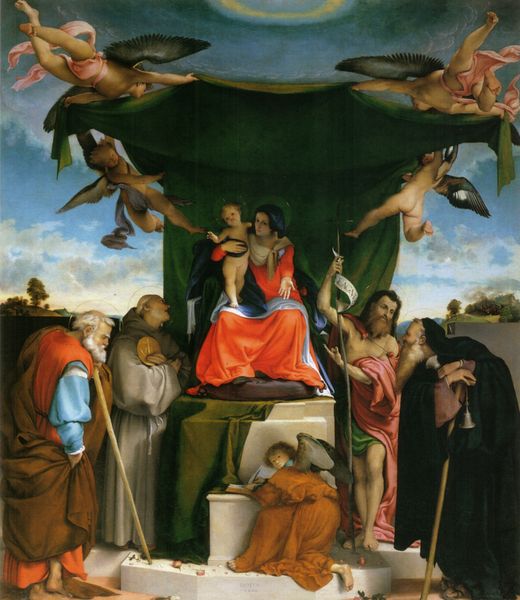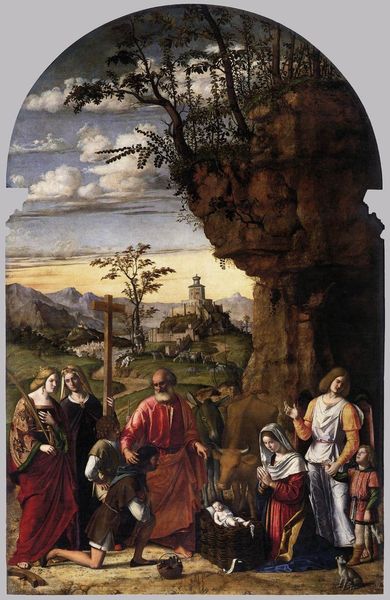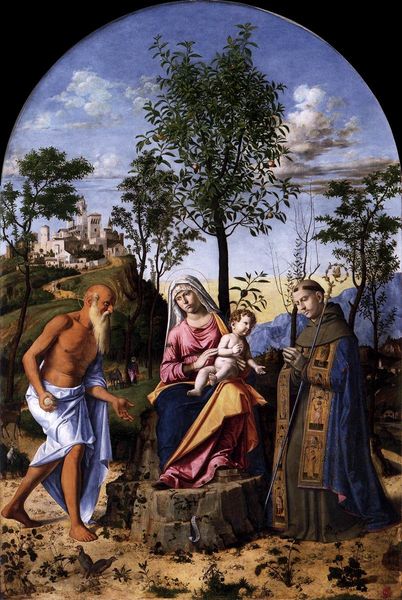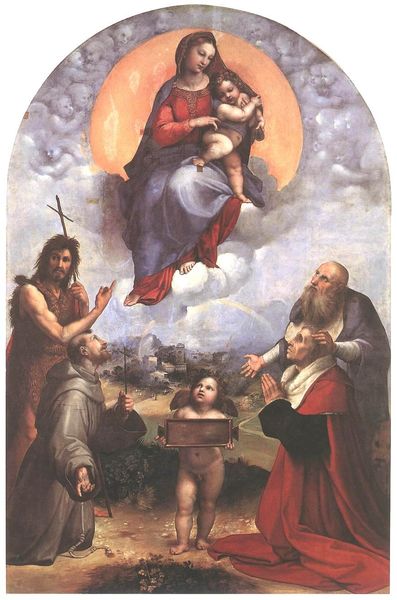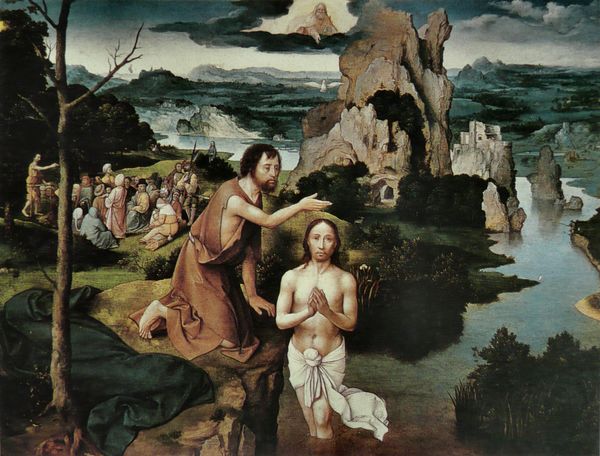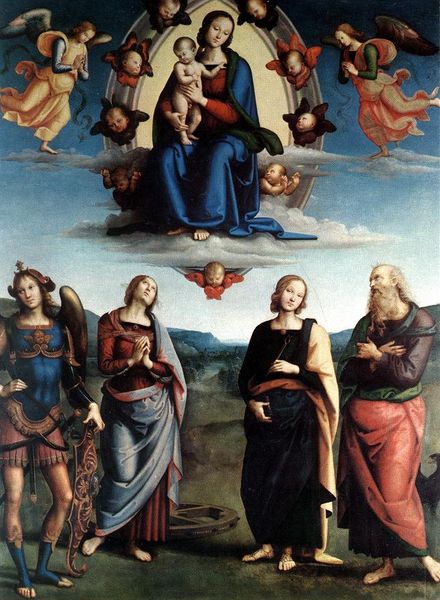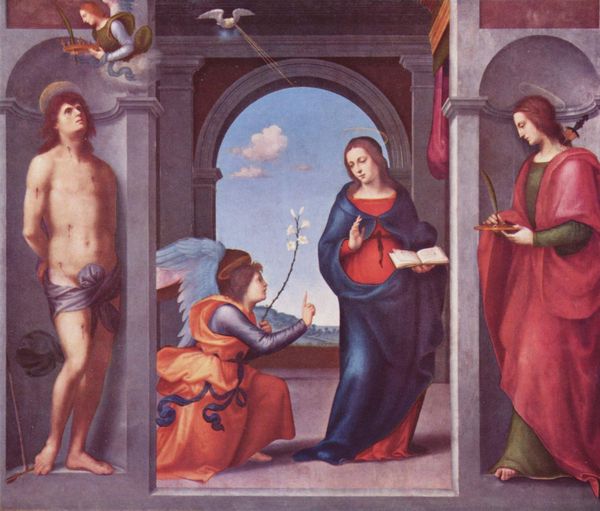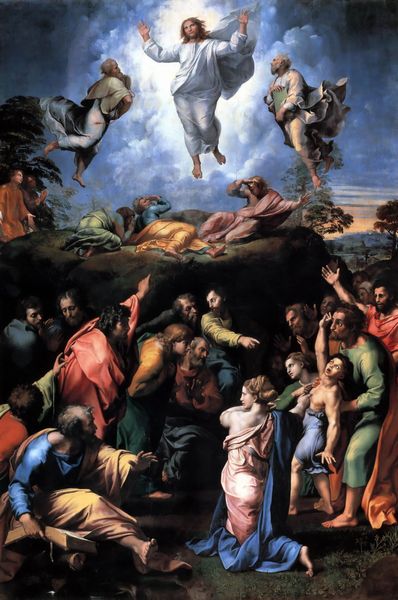
painting, oil-paint
#
painting
#
oil-paint
#
landscape
#
figuration
#
oil painting
#
christianity
#
history-painting
#
academic-art
#
italian-renaissance
Dimensions: 350 x 210 cm
Copyright: Public domain
Curator: Standing here in San Giovanni in Bragora, we’re looking at Cima da Conegliano's "The Baptism of Christ," an oil painting dating back to 1493. Editor: The upper register grabs me first—the angels floating on what look like vibrant, dyed cotton puffs, somehow heavy yet ethereal. It's a curious combination. Curator: Consider that the pigments available to Cima were limited and often derived from ground minerals and plants. The sourcing and mixing of those colors—how labor-intensive that process would be. Also, look at how the location itself, San Giovanni in Bragora, informs its context. Religious works such as these affirmed faith and showcased patron wealth and power in the community. Editor: It does feel inherently connected to this space. The light seems to fall on it perfectly. Thinking about patronage, what sort of messages do you think this piece, displayed so publicly, communicated to the Venetian populace at the time? Was it purely devotional? Curator: Absolutely devotional, but also didactic. The prominent display would reinforce church teachings, particularly on sacraments like baptism, while the serene landscape roots the divine event firmly in a familiar world. But its material existence also tells us of the city’s prosperity—Venice's role as a center for trade certainly contributed to the availability of artist's materials and influenced workshop practices. Editor: I’m struck by the juxtaposition of the earthly scene, Christ and John so humanly rendered, against the obviously symbolic space above them. That stylized river doesn't feel as realistic, and its clear intent is as a space between spiritual and earthy. Was the art intended to encourage people’s own consideration of those concepts of life? Curator: Indeed, such art provided a public stage for contemplating faith’s relationship to civic life and offered viewers visual tools to reflect on how doctrine intertwined with earthly concerns. The figures in the foreground act almost as a bridge, ushering viewers into considering spiritual matters from a material perspective. Editor: Looking again at these heavenly figures, there is an accessibility because you're understanding those elements but not believing they're "real" the way you would in more realist style paintings. It's art with a practical purpose of public engagement, that blends different production values. Curator: A synthesis that reflects both religious and secular spheres of influence in 15th century Venice, shaping not only the subject matter, but also the work's very fabrication. Editor: Fascinating how this snapshot of a religious event reveals the intricate socio-political structures of the time, brought into view via oil paints. Curator: Exactly, seeing it anew, one can better appreciate both the sacred intention, but the grounded construction, that is at play.
Comments
No comments
Be the first to comment and join the conversation on the ultimate creative platform.
